Despite the ambivalence (and even denial) of many of our politicians – climate change is here, and people around the world are already feeling its impacts.
What many don’t know, is that pre-existing gender inequalities in our societies are exacerbating the impacts of climate change on women, particularly those living in poverty. Many of the women ActionAid works with – from Vanuatu to Bangladesh – are on the frontlines of this new environmental reality.
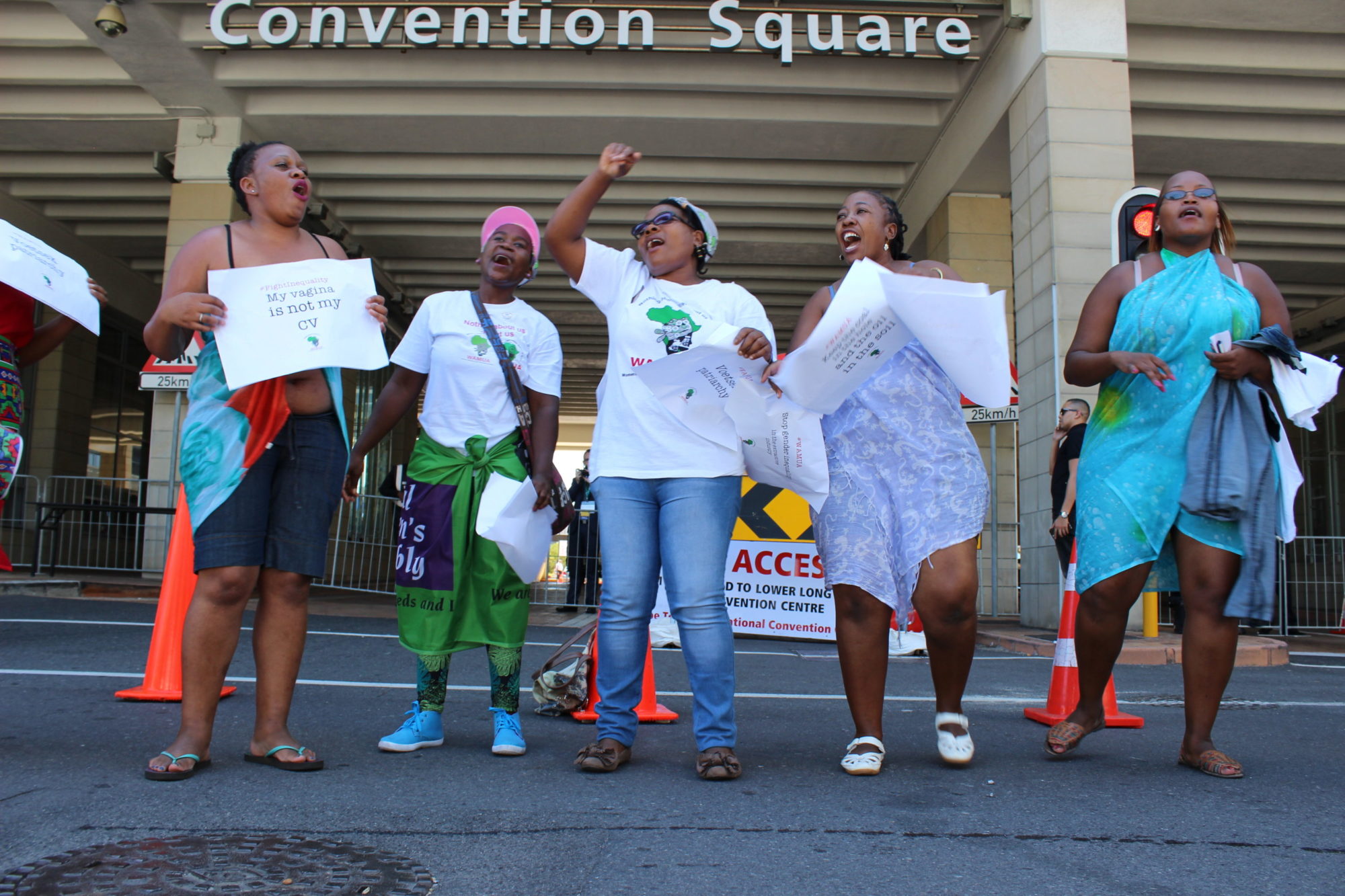
Francina Nkosi (second from right) and other South African women led a successful campaign in 2017 to stop Australian funding of the Boikarabelo coal mine in her community.
Despite being disproportionately impacted by climate change, women are leading the response to it too. They are fighting back against fossil fuel companies whose activities will only worsen the problem, while also organising their communities to respond and prepare to the effects of a changing climate. With very little support, and in the face of extreme adversity, women around the world are ensuring the resilience and sustainability of their communities.
But to effectively combat the gendered impacts of climate change, the world needs to understand what women are up against. Here are 3 key ways women are being disproportionately impacted by accelerating climate change:
1. Often responsible for their family’s food, water and energy needs, women are hit harder when climate change threatens essential natural resources.
Women we work with around the world are typically responsible for securing water, food, and fuel for their families and communities. But increasing drought, floods and other unpredictable weather patterns can have devastating impacts on these essential resources. This puts an increased burden on women.
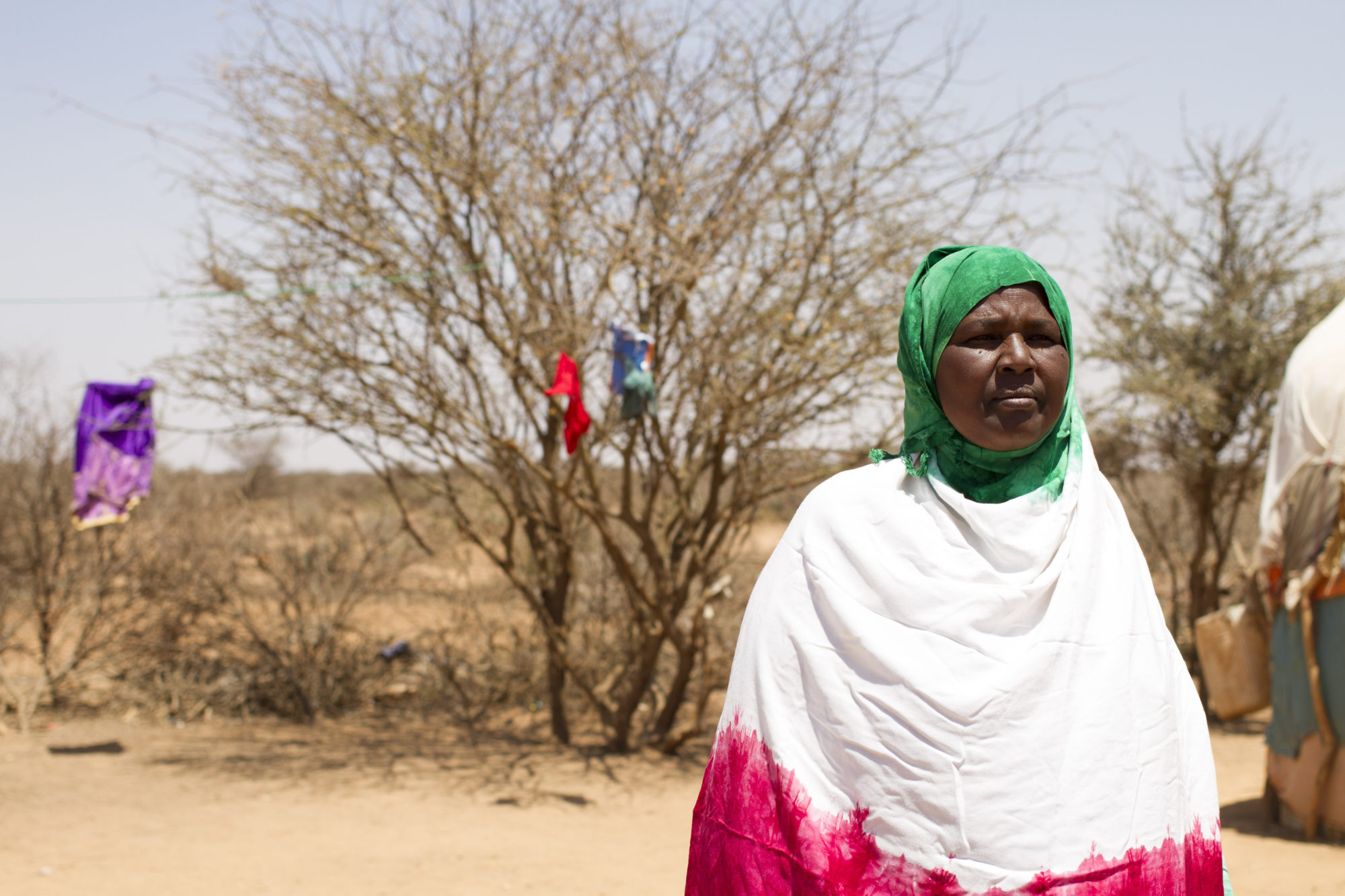
Khadra is the mother of seven children and the Head of a Women’s Coalition in a settlement outside Sayla Bari, Hargeisa, Somaliland. Photo credit: Ashley Hamer /ActionAid.
Khadra, a 50 year old mother of 7 and Head of a Women’s Coalition in Somaliland, has experienced first hand the impacts of these extreme weather events on her family.
Women are the main victims of drought. They are the ones with the burden. They worry about how they will feed their children and do not eat themselves.
Close to two-thirds of all women in developing countries are involved in agricultural work – a statistic that goes up to 90 percent in many African countries. This puts a special burden on women during times of drought or other extreme weather events.
As a result of the drought, many women in Khadra’s community have had to travel much farther distances to collect clean water and carry it back to their families.
One woman broke her hand carrying heavy water – another her wrist, said Khadra.
Not only are women more prone to injuries from this back-breaking labour, but they also face increased risk of sexual harassment and assault on these long journeys to collect food and water.
Even when they return home, resource insecurity leads to household tension and in turn increased levels of domestic violence. It also leads to resource-based conflict and war on a larger scale, during which human rights abuses against women are common.
2. Women are more at risk than men following climate related disasters.
Despite their strength and their resilience, women are disproportionately impacted by climate-related disasters, which are increasing in scale and frequency. Due to widespread gender inequality and poverty, women and children are far more likely to die in a disaster than men.
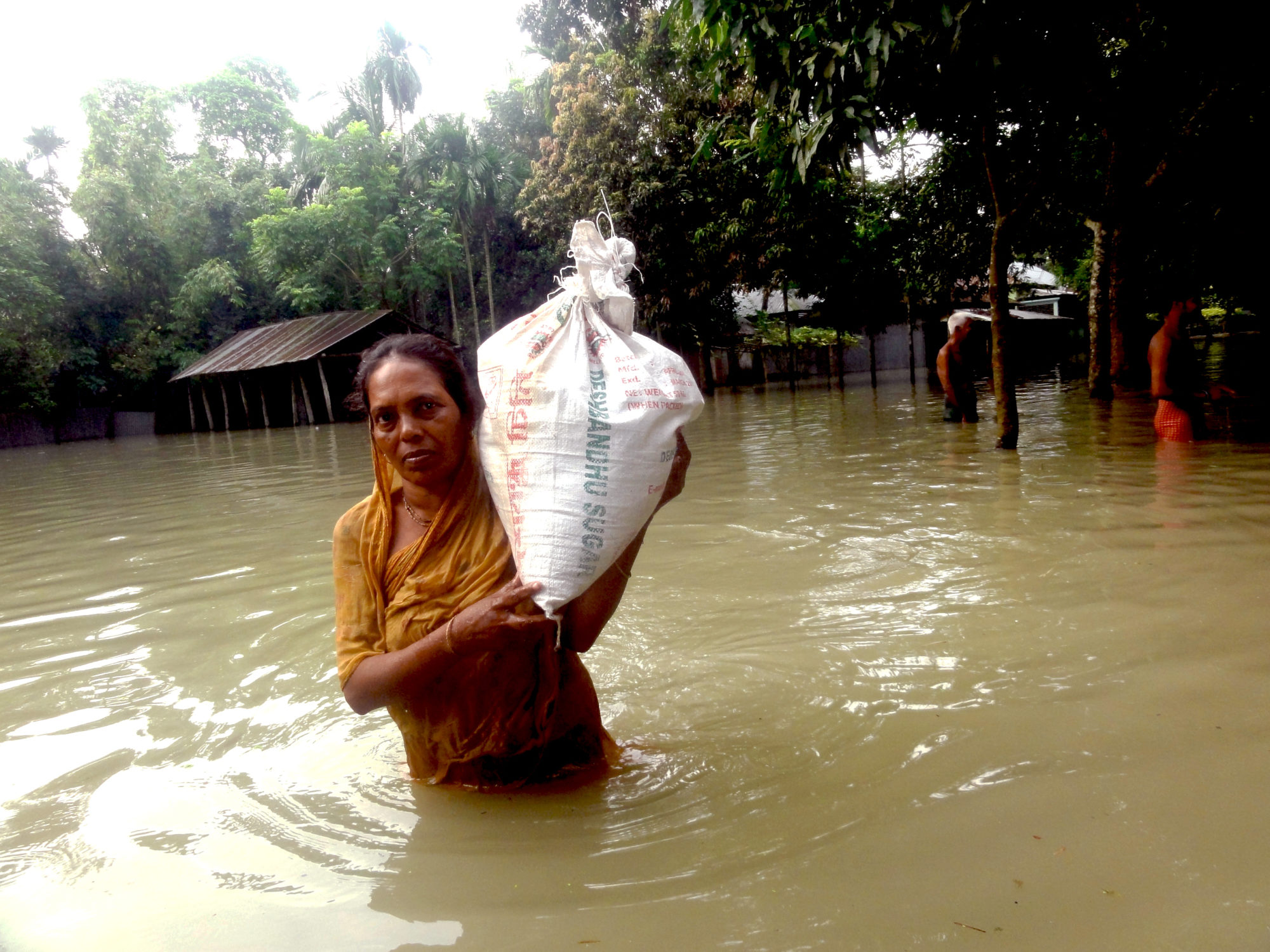
Severe flooding across South Asia in 2017 devastated the livelihoods of many women and their communities.
During the 2004 Indian Ocean Tsunami, 4 women lost their lives for every man that was killed. This was due to limitations on mobility that prevented women from evacuating in time: many women were trapped inside their houses, separated from their husbands and not given permission to flee. A lack of access to education and information were also contributing factors. Many women aren’t taught how to swim, or provided with information on what to do in the event of a tsunami. Consequently, fisherwomen in India working on the beaches were exposed to the sheer force of the tsunami and drowned.
Even if they survive the initial moment of crisis, those living in poverty or in a society with extreme gender inequality are less likely to receive adequate health care following a climate driven disaster.
The rate of sexual and gender based violence often also increases during and after disasters. In Vanuatu, the Tanna Women’s Counselling Centre reported a 300% increase in new domestic violence cases after two tropical cyclones hit them in 2011. Human trafficking has also been found to increase by 20-30% during the chaos of a climate disaster. In spite of these serious threats, traditional humanitarian responses often overlook women’s rights and unique protection needs.
3. Due to existing gender inequalities, women face more challenges adapting to the impacts of climate change.
The women we work with around the world are often more vulnerable to the impacts of climate change as a result of their lower social, political and economic status to men. Their unequal status means women often lack access to and control over resources and decision making, which impacts their ability to prepare for and respond to a crisis.

Mana Devi carries drinking water back to her family in Balchour village, India. Photo by Srikanth Kolari/ActionAid.
Women also spend more time on unpaid work around the home – collecting water, food and fuel to take care of their family’s basic needs. The stresses of climate change could increase the need for this unpaid labour, as it becomes more difficult and time consuming for women to secure essential resources. This increased burden means women have very little time left to engage in other income-generating activities, or obtain the same level of education as men in their communities.
The good news? Women are on the front lines of the fight against climate change and are spearheading the creation of more sustainable and resilient communities.
Around the world, women living in low-income communities are already leading the global response to climate change. Despite being the most affected, women are showing unparalleled resilience and resourcefulness in the face of its impacts.
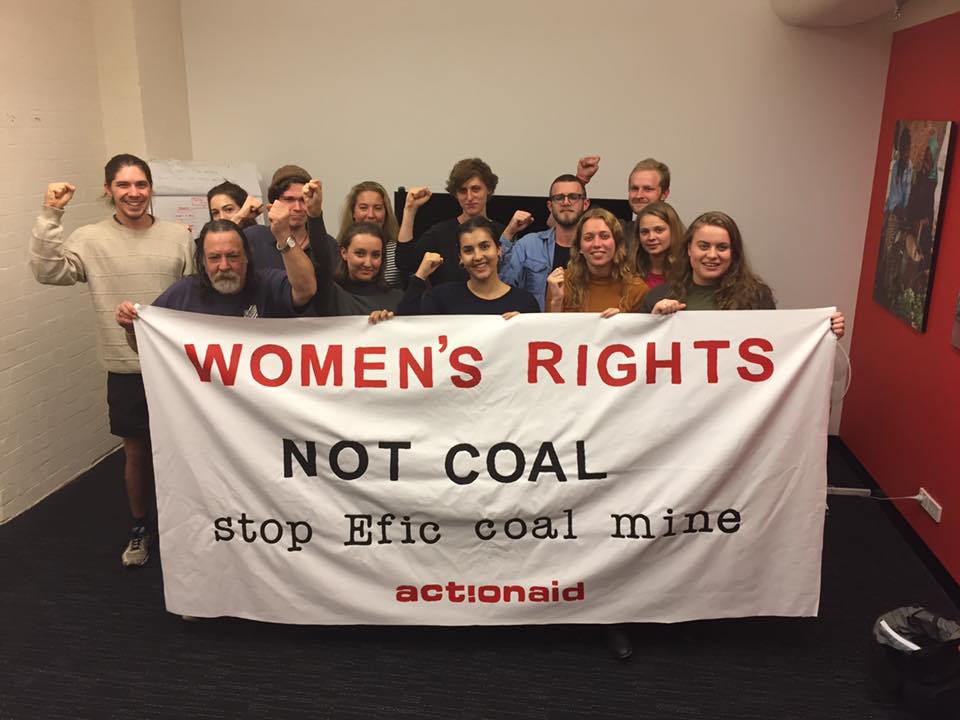
Working in solidarity, women around the world have had huge wins combating climate change and minimising fossil fuel pollution.
Just last year, women in Australia stood behind women in South Africa calling on Australia’s export credit agency to rule out funding for the Boikarabelo coal mine in South Africa – and we won!
As the backbone of the agricultural industry, women smallholder farmers can also lead the way in strengthening the resilience of entire communities. Supported by ActionAid, the women of Bakhu village in Senegal meet regularly for this purpose. Climate change is already making their lives and farming more difficult every year.
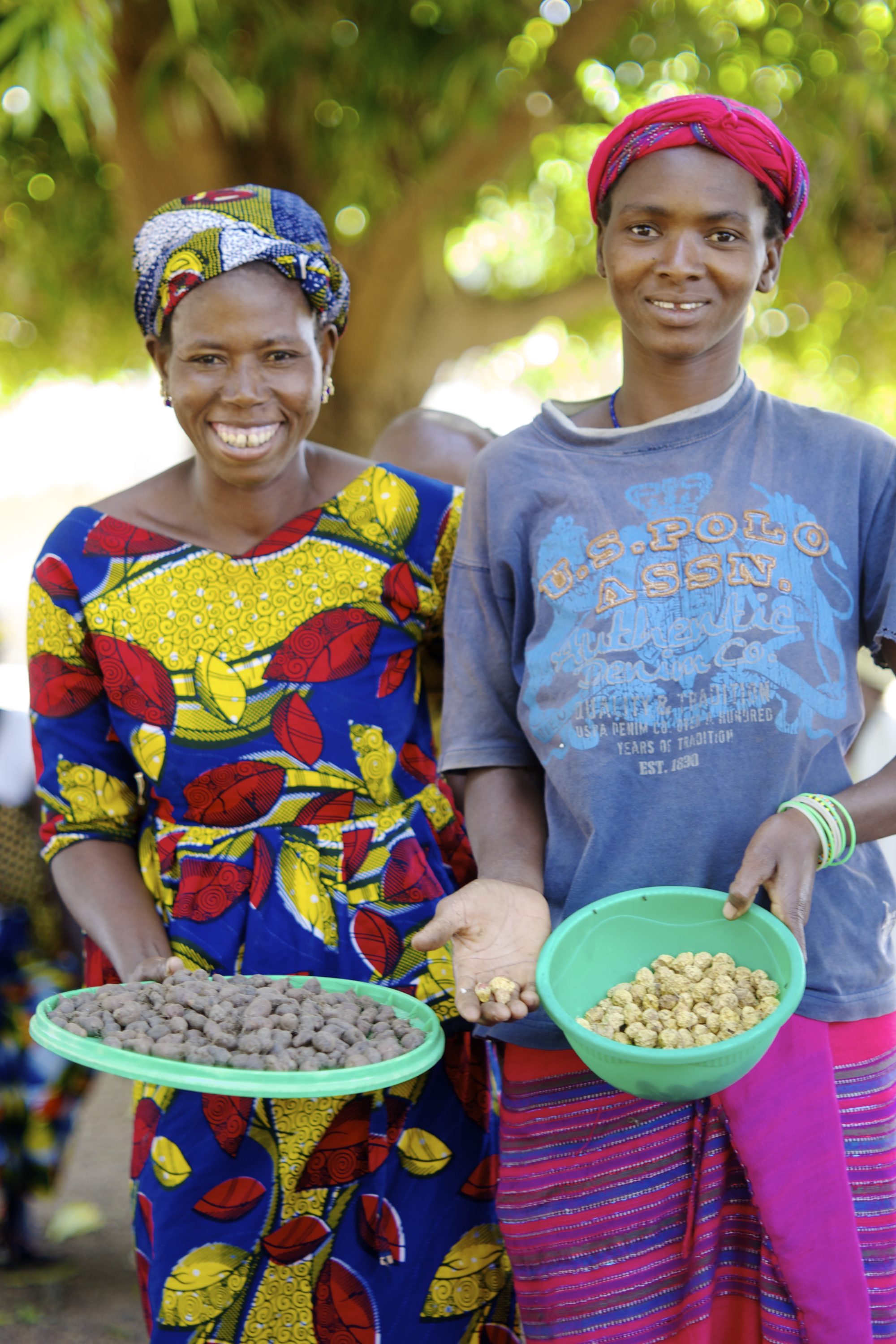
Alongside practical training in new agricultural techniques and a new weather information program, Mariama Kessa Djallo, (president of the women’s group) has found that the project has strengthened their collective power too.
Because of the project, we women came to work together as a group for the first time… Now we can organise ourselves to solve problems together, and through this we can make a chain of solidarity.
In addition to being powerful climate warriors, women are among the most immediate and effective responders in climate fuelled disasters. Drawing on their existing skills, community networks and knowledge, women ensure care for the injured and most vulnerable community members, and are usually responsible for the food security of their families.
From our work with women first responders, ActionAid has seen that when women’s leadership is effectively resourced and recognised, it improves humanitarian response and can transform the way societies view women over the longer term. By investing in women to lead community disaster preparedness, communities will be better prepared for the risks of increasing climate adversities. And we’ll be on the path to overcoming the gendered impacts of climate change, too.
To take climate action in solidarity with women around the world, sign the petition today.